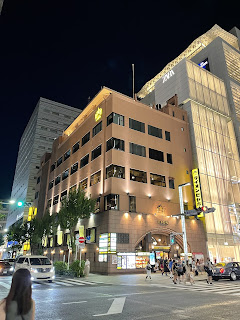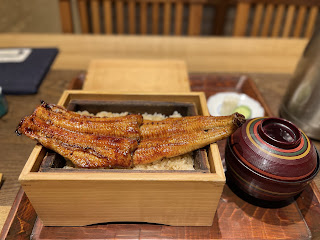Today's Ginza is one of the premier shopping destination and high-end
dining and shopping location in Tokyo. It is located nearby an islet,
and it is thought that Ginza was originally marshes land that was
reclaimed including the surrounding Hibiya and the site of former
Tsukiji market. Ginza, Shimbashi, and Kanda area are the heart of downtown old Tokyo.
According to this article, Ginza name originated from gin 銀 or 'silver' and ja/za 座 or 'seat' as it was the site of silver mint that exclusively designated by Tokugawa shogunate in Edo (old name of Tokyo. Ginza was the centre of the artisans, merchants, as well as theater actors of Kabuki and Noh players who provided entertainment. It sits on Tokaido which is the old Kyoto to Edo highway linking the two top towns of Japan in olden times.
Later on, Ginza was redeveloped after big fire with bricks to be fireproof and thus developed a number of unique Japanese-Western style buildings and became known to be bricktown or Rengagai. One of remaining building from that era is Wako building with clock on top that was made by clockmaker who founded Seiko.
Ginza went through many ups and downs. When the first railway opened connecting Yokohama and Shimbashi in late 19th century, it became the entry point to many foreign goods in Tokyo so vendors then setup their goods and innovative style of window shopping where shoppers does not have to remove their shoes during that era.
There is also tussle on the official trees of Ginza, although the willow trees prevailed after replacing the original set of trees of cherry blossoms etc and when rebuilding efforts managed to replanted them instead of gingko trees post Great Kanto earthquake.
It is interesting to learn that cafe culture in Ginza started by Japanese authors returning from Paris, was seeking to establish venues of social and intellectual gathering. Thus cafe such as Printemps, Lion, Tiger sprung up.
First few department stores also opened in Ginza for first time. The commercial value of Ginza skyrocketed and rents in this location became known to be the highest all over Japan.
Originally Ginza was surrounded by rivers forming moats, and efforts to refill them with World War II wreckages. Post WW II, the American troops paraded through streets of Ginza, erected English road signs and designated some department stores to provide goods to US troops until 1952.
In 2022 when I visited, I noticed that some of the pedestrian street is converted back to traffic-through road. I wonder if during weekend the practice of pedestrian-only street on the main thoroughfare is maintained.
There is a place serving Edo-style Unagi-don which means that the freshwater eels were grilled without steaming.
I also had the pleasure to try Japanese bbq on a late lunch i one of the commercial building by Ginza-dori.





















